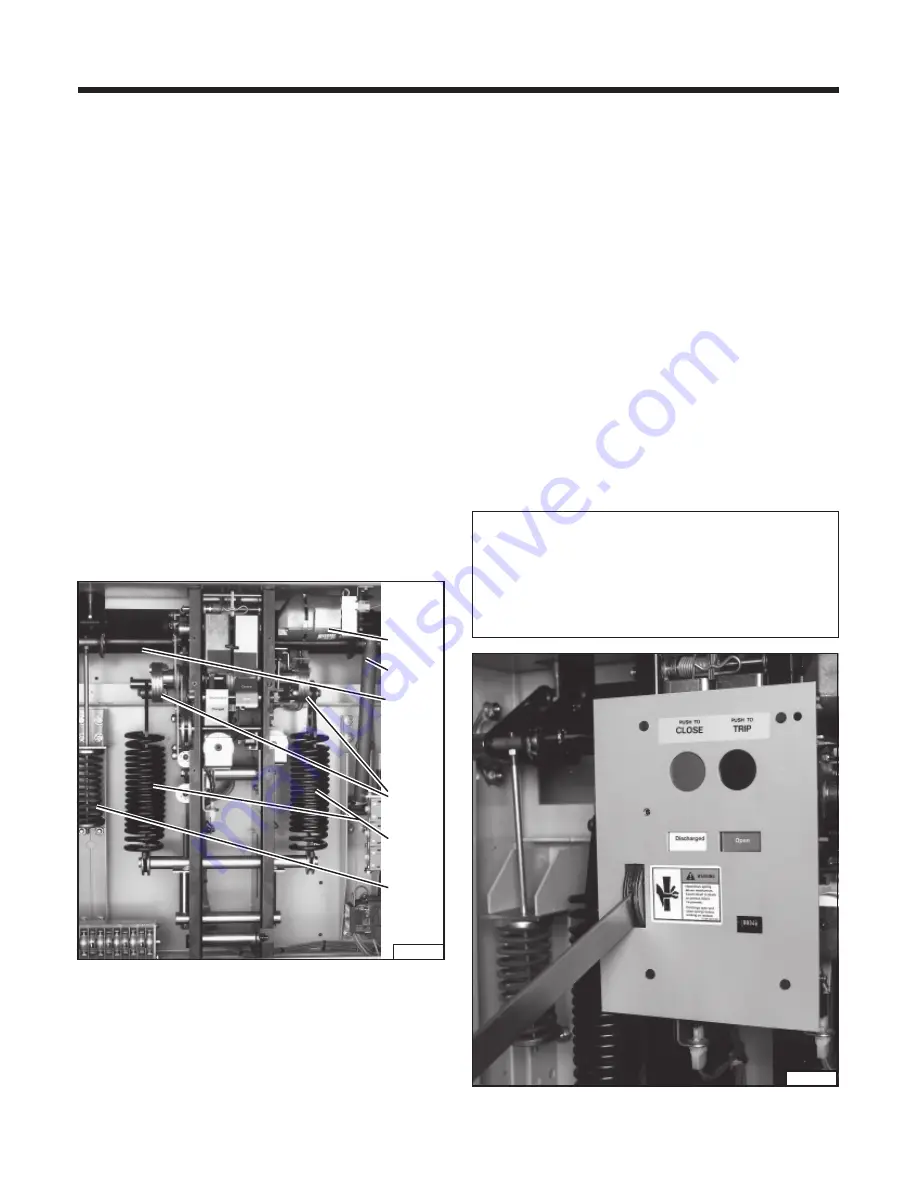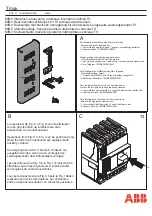
One configuration is used for 15.5kV 1200A circuit break-
ers, while a somewhat different damper and linkage sys-
tem is used for all other ratings of SDV-4A circuit breakers.
(see figure 26)
The outer tube and (inner) damper remain uncoupled until
the end of the opening operation is reached. At this time,
the tube’s striker block contacts the damper piston, to be-
gin control of movable contact dynamics.
Two different damper and linkage systems are used on SDV-
4A circuit breakers.
Manual Spring Charging - Manual charging of the closing
springs is accomplished using a lever in lieu of the spring
charging motor. Figure 16 shows the principal components
of the manual spring charging mechanism.
The manual spring charging lever is inserted into a rectan-
gular socket in the hand operator. The socket is accessible
through the operator control panel of the circuit breaker
operator. Moving the lever up and down in a cranking or
pumping motion causes rotation of the internal spring
charging components.
Note: Manual spring charging components will be
damaged by overcharging.
Manual charging action must be suspended when the
operator sees the “Charged” status indicator appear on
the operator control panel of the circuit breaker and hears
the sound of impact against the internal closing latch.
Figure 16. Manual Charging of the Closing Springs.
connected to crank arms mounted on the rotating main
cam shaft. The closing springs are extended, and charged,
by rotation of the crank arms connected to the movable
ends of the springs. The fixed ends of these springs are
attached to a support arm, which in turn is bolted to the
structure of the circuit breaker operator.
The opening spring is connected to the jack shaft. When
the circuit breaker closes, rotation of the jack shaft causes
the opening spring push rod to compress and charge the
opening spring. Consequently, the opening spring is auto-
matically charged whenever breaker contacts are closed.
Trip Free Operation - The type SDV circuit breaker is me-
chanically and electrically trip free. This important function
enables the breaker to be tripped before, after or during a
closing operation. Whenever the circuit breaker trip shaft is
moved as the result of manual or electrical signals, a) a closed
breaker will open, b) a breaker in the process of closing will
not complete the close operation and will remain open, or c)
an open breaker will not be able to be closed.
Damper - Type SDV circuit breakers are equipped with a
sealed, oil-filled, viscous damper, or shock absorber (Fig-
ure 15). The purpose of this damper is to limit overtravel
and rebound of the vacuum interrupters’ movable contacts
at the end of an opening operation. The damper action
affects only the end of an opening operation.
Figure 15.
Closing and Opening Springs, Spring Charging
Motor and Damper.
The cylindrical body of the damper is secured to the breaker
operator frame, with a yoke. The damper’s piston and
striker tip protrude from the opposite end of this cylinder
(the upper end as installed on the breaker). A striker block
is fixed within an outer tube, which is guided by the cylin-
drical body of the damper. The end of the outer tube is
attached to the breaker jack shaft.
Interrupter/Operator Description
2100-98
2090-98
Motor
Damper
Jack
Shaft
Crank
Arms
Closing
Springs
Opening
Spring
16





































